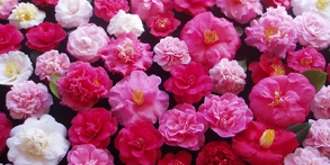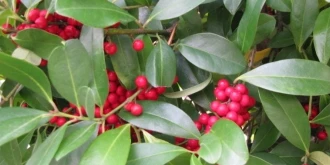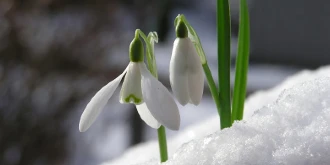Best Bloomers for the Fall and Winter
As the seasons change and the weather shifts from warm, sunny days to cool, or even freezing, fall and winter months, we expect to see barren trees and dull gardens. While the barren trees part might ring true across the country, gardens can, in fact, remain colorful and lively through the cold weather.
Try some of these winter-savvy plants in your home landscape.
Camellias

This plant boasts bright blossoms, stunning green leaves, and colors ranging from light pink to vibrant red. Camellias will do best and be able to thrive all year long in your garden if you live in zones seven through nine on the USDA plant hardiness map . However, even if you live in colder zones, you can probably cultivate some of the new hybrids that are more suitable for very cold weather.
You can choose from more than 280 different types of Camellias and pick one that fits your flowerbeds perfectly. Some winter varieties include Ashton’s Pride, Frost Prince, Snow Flurry, Elaine Lee and Ashton’s Snow.
Tips:
- Camellias can grow to an average of about 10 feet in height, but grow slowly. Make sure you are prepared to care for them during their long lives.
- These flowers don’t tolerate drought conditions, and should be kept watered.
- Plant Camellias in partial shade, so they can bloom without getting their leaves burned by harsh sunlight.
Holly

This hardy, easy-to-manage plant is one of the most common plants seen during the holiday season, both as decorations and in gardens. With berries instead of flowers, it can add a bit of “unexpected” to any garden. It has vivid green leaves and a splash of color due to its berries, which can range in color from deep red to yellow. Holly is drought tolerant and is very adaptable to different winter climates.
Tips:
- The soil needs of different types of Holly can vary, so double check instructions for the specific type that you want.
- To grow berries, you’ll need both a male and female plant.
Snowdrops

The colder the weather, the longer these flowers will last! These tiny, bulb-shaped blooms look beautiful when placed in gardens, and under trees and shrubs around the yard. They’re white like the snow, but the delicate, green stems and leaves add a pop of color to the wintery scene. This plant should be planted in late fall or early winter and will bloom in the winter and stay vivid through the transition into the spring. This plant does well in zones two through seven, and has the ability to survive a snow event and remain dormant until conditions improve.
Tips:
- Snowdrops love living in full sun or partial shade.
- These are small plants, so the bulbs should be placed close together for the best display.
- Provide this plant with plenty of water, and try not to make the mistake of letting it go dry in warm weather.
Although there are may more types of plants to choose from when deciding which ones are best for your garden, these are just a few of the examples of the different needs of winter-blooming plants and the different environments that may be necessary.
When choosing plants for your yard, pay attention to the size, amount of sunlight needed, watering needs, and when you should plant them. These plants thrive in the winter and will be great additions to winter landscapes. The Grounds Guys® wants you to be aware of some of your options and encourage you to explore the options when it comes to winter gardens.
 Click to call
Click to call


